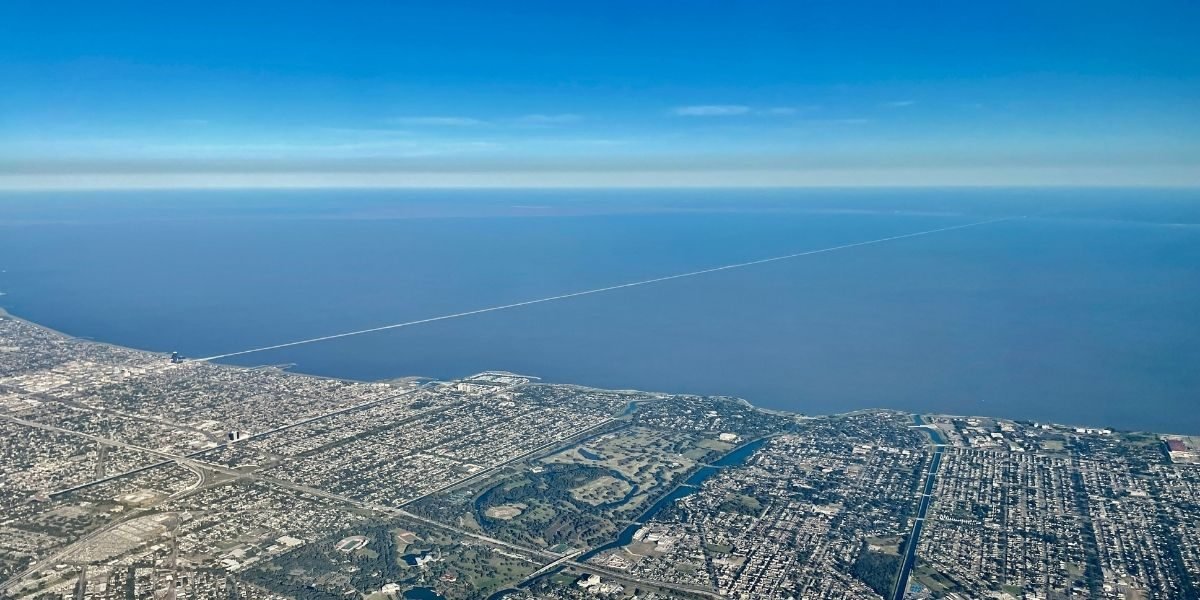The Lake Pontchartrain Causeway stands as a testament to audacious engineering vision and human ingenuity, stretching an impressive distance across the vast expanse of Lake Pontchartrain in Louisiana. This monumental structure is not merely a bridge; it is a vital artery that dramatically reshaped the connectivity and development of southeastern Louisiana, particularly influencing the relationship between New Orleans and the communities on the north shore of the lake. Its sheer length and the conditions under which it was built speak volumes about the ambition of its creators, who dared to conquer one of nature’s formidable obstacles to improve regional transit.
Before the Causeway’s existence, traversing Lake Pontchartrain meant either a lengthy journey around its eastern or western shores, or relying on ferry services that were often slow and weather-dependent. As the population around New Orleans grew and economic activities expanded, the need for a more direct and efficient crossing became increasingly apparent. The vision for a permanent link across the lake had been discussed for decades, even centuries, but the technological and financial hurdles seemed insurmountable for a long time. The dream of a straightforward passage was consistently fueled by the desire to reduce travel times and foster closer ties between the two distinct geographical areas.
Read Also: Jeremy Tomes: The Quiet Force Behind America’s Infrastructure-Focused Private Equity Surge
The eventual realization of the Lake Pontchartrain Causeway marked a pivotal moment in American infrastructure history. It demonstrated how innovative construction techniques and a determined spirit could overcome significant environmental challenges. The bridge became more than just a roadway; it symbolized progress, connecting previously disparate communities and unlocking new possibilities for commerce, recreation, and residential development on the north shore. Its construction paved the way for unprecedented growth and cemented its status as an iconic engineering achievement that continues to serve thousands of commuters daily.
What Unique Engineering Challenges Did the Causeway Present?
Constructing a bridge of this magnitude over a vast, shallow estuary like Lake Pontchartrain presented a unique set of engineering challenges. The lakebed primarily consists of soft clays and silts, requiring specialized foundation techniques to ensure the stability of such a massive structure. Traditional methods for driving piles might not have sufficed for the required depth and load-bearing capacity in these challenging soil conditions. Engineers had to devise solutions that could anchor the bridge securely, capable of withstanding not only the immense weight of the concrete but also the environmental forces of a large body of water susceptible to strong winds and hurricane activity.
One of the most innovative solutions involved the pioneering use of large, pre-stressed concrete piles. Developed by Maxwell Upson, these hollow cylindrical piles, measuring up to 54 inches in diameter, were far larger and stronger than typical concrete piles of the era. Their design allowed them to be driven deep into the soft lakebed until sufficient resistance was developed to support the immense load. This revolutionary approach to pile fabrication and installation, utilizing centrifugal force during manufacturing, ensured the necessary durability and strength. It significantly advanced the field of concrete construction, proving that large, prefabricated components could be successfully employed on an unprecedented scale for major infrastructure projects.

Photo Credit: Unsplash.com
Beyond the foundations, the sheer scale of the project demanded efficient construction methods. Building nearly 24 miles of bridge required mass production of identical components to meet tight deadlines. Engineers opted for a modular design, where individual concrete spans and bents (the support structures for the deck) were prefabricated in a specialized yard on the north shore. These massive pieces were then transported by barge directly to the construction site on Lake Pontchartrain and hoisted into place. This assembly-line approach dramatically expedited the construction process, allowing the first span to be completed in a remarkably short period, a testament to meticulous planning and streamlined logistics.
When Was the Lake Pontchartrain Causeway Constructed and Expanded?
The history of the Lake Pontchartrain Causeway is marked by two distinct phases of construction, driven by the growing demand for connectivity. The idea for a permanent crossing gained significant momentum in the mid-20th century, culminating in the groundbreaking for the first span in 1955. This initial two-lane bridge, designed to carry traffic in both directions, was an ambitious undertaking for its time. Through efficient prefabrication and strategic construction techniques, the project moved at an impressive pace, reaching completion well ahead of schedule. On August 30, 1956, the first Lake Pontchartrain Causeway officially opened, instantly transforming travel across the lake.
While the first bridge provided an invaluable link, the rapid growth of the region and the increasing volume of traffic soon made it clear that a single span would not be sufficient. By the early 1960s, daily traffic counts had surged beyond initial projections, leading to congestion and delays. Recognizing this escalating need, authorities began planning for a parallel span to accommodate the burgeoning number of vehicles crossing Lake Pontchartrain. This foresight ensured that the infrastructure could keep pace with the region’s development, preventing bottlenecks that would stifle economic and social exchange. The decision to expand reflected a commitment to long-term regional planning and infrastructure investment.

Photo Credit: Unsplash.com
Construction on the second, parallel span commenced in June 1967. This new bridge was built just 84 feet east of the original, utilizing many of the same innovative prefabrication methods that had proved so successful before. Upon its completion in May 1969, the expanded Lake Pontchartrain Causeway became a dual-span structure, with each bridge dedicated to one direction of traffic. The original bridge became the southbound span, while the new addition served northbound traffic. This expansion significantly improved traffic flow, safety, and efficiency, solidifying the Causeway’s status as a vital piece of the region’s transportation network and one of the longest continuous bridges over water in the world.
What is the Significance of This Engineering Achievement?
The Lake Pontchartrain Causeway holds immense significance as an engineering marvel, not only for its impressive length but also for its pioneering use of construction techniques. At the time of its completion, the first span was the longest continuous bridge over water globally, a record that was extended when the second span was added. This distinction brought international recognition to Louisiana and showcased American engineering prowess on a grand scale. The modular prefabrication methods employed set a precedent for future large-scale bridge projects worldwide, demonstrating how efficiency and precision could be achieved in challenging marine environments.
Beyond its technical achievements, the Causeway fundamentally transformed the economic and social landscape of southeastern Louisiana. It drastically reduced travel times between New Orleans and the north shore communities, from hours of driving around the lake or waiting for ferries, to a mere 25-30 minute drive. This accessibility spurred rapid residential and commercial development on the north shore, turning formerly quiet towns into thriving suburbs. The bridge facilitated easier commuting, increased tourism, and created new opportunities for businesses, significantly integrating the economies of both sides of Lake Pontchartrain.
Read Also: Niagara Falls: Beyond the Drenching (But Totally Worth It) Experience
Today, the Lake Pontchartrain Causeway remains a critical transportation corridor and a symbol of human ambition to overcome natural barriers. It continues to be recognized by civil engineering societies as a historic landmark, a testament to its enduring design and structural integrity, even after decades of continuous use and exposure to harsh weather conditions, including numerous hurricanes. The bridge stands as a powerful reminder of how visionary engineering projects can shape regions, improve daily lives, and contribute lasting value to society, proving that human determination can connect communities across vast bodies of water.












